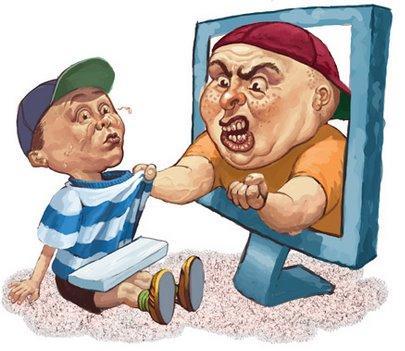
Bullying has found a new home beyond the playground (via ThinkProgress).
Nearly every American teenager has used social media, roughly 90% of 13- to 17-year-olds. Despite the benefits of online networking for kids — community engagement, enhanced communication and technical skills — constant connectivity poses real physical and emotional dangers. As kids become more plugged in at younger ages (consumer reports in 2011 revealed that 7.5 million Facebook users are under the age of 13) they are increasingly susceptible to the “stranger dangers” that lurk in the dark corners of the internet. Chief among these concerns is cyberbullying: harassment that happens on a virtual platform, where children are vulnerable 24 hours a day, seven days a week.
Cyberbullying commonly occurs via texting, as well as by email and social media sites (via Telegraph).
Unlike conventional bullying, cyberbullies are able to hide under a cloak of anonymity when preying on their victims. Cyberbullying is far-reaching; surveys reveal that at least 25 percent of children have been victimized online. Recent research has also shown that victims are often subject to higher levels of depression after these virtually-induced traumas, compared to conventional schoolyard bullying.
Youth suicides are strongly correlated to cyberbullying. Canadian teen Amanda Todd posted a YouTube video chronicling the agony of being cyberbullied before taking her own life last month. In response to this and other tragedies, government agencies and anti-bullying advocates are pushing for more social awareness, but due to the rapidly evolving nature of technology, cyberbullying sources and trends are a challenge to track down.
In our interview with Carrie Goldman, author of recently published Bullied: What Every Parent, Teacher, and Kid Needs to Know About Ending the Cycle of Fear, she discussed her two-step strategy for combating cyberbullying. First, she promotes preventative measures, such as keeping social media account passwords private, and keeping revealing information or images from others. If the bullying has already started, Goldman urges parents to take screenshots, delete the content, and submit the evidence to the site administrator.
Despite the sobering prevalance of cyberbullying, there is reason for optimism. Support sites offer a community for victims to connect and commiserate with each other, and help develop a sense of belonging, rebuilding trust and confidence after being beaten down by perpetrators.
Signage can help foster bully-free environments (via MySecuritySign).
in a majority of states. Still, it’s a law that’s extremely difficult to enforce. It’s understandably challenging for parents to decide how much they should and can monitor their kids’ digital activity, particularly as they grow older and more independent. To help caretakers strategize, the US Computer Emergency Readiness Team has compiled a list of suggested approaches to help shield children from cyberbullying acts. These include teaching kids proper online etiquette, monitoring warning signs, keeping open lines of communication, and reporting harassment or cyberbullying cases to appropriate authorities. As the electronic communication world merges with our daily lives, it is crucial that we continue to find solutions to protect our most vulnerable users.
-M. Miles